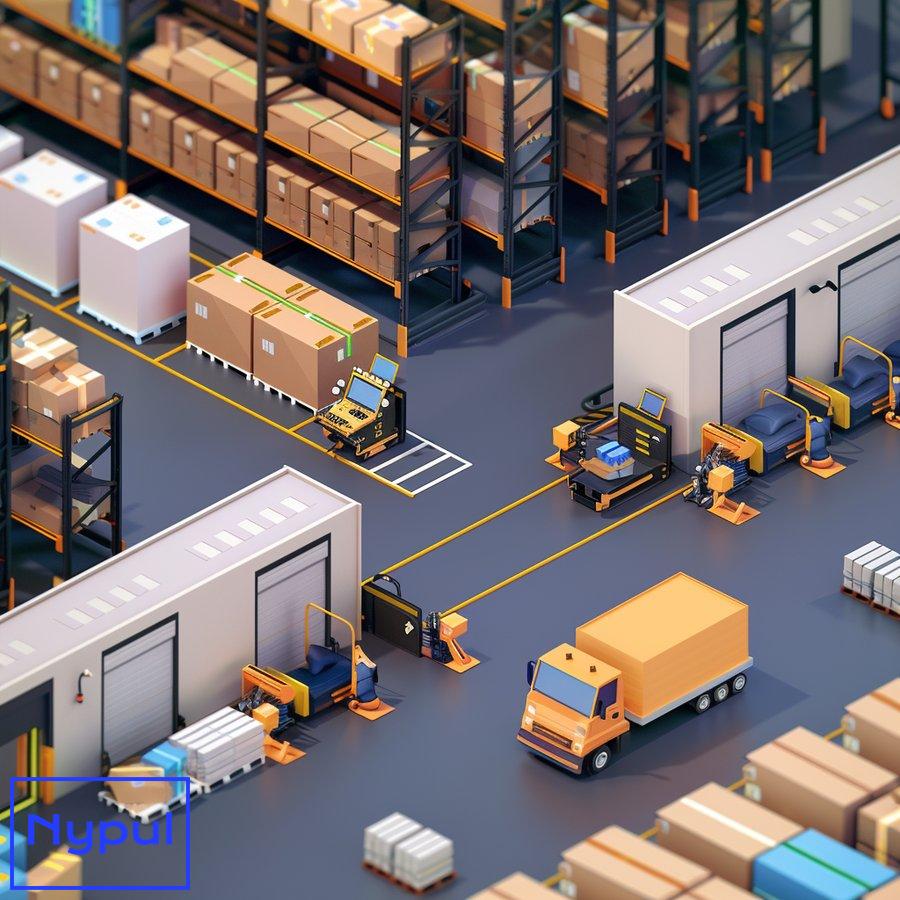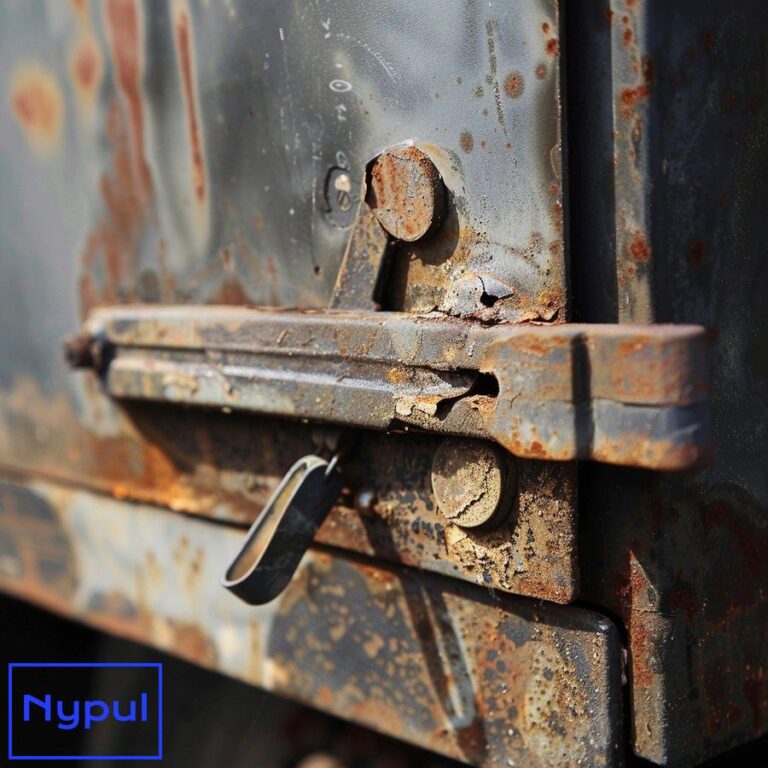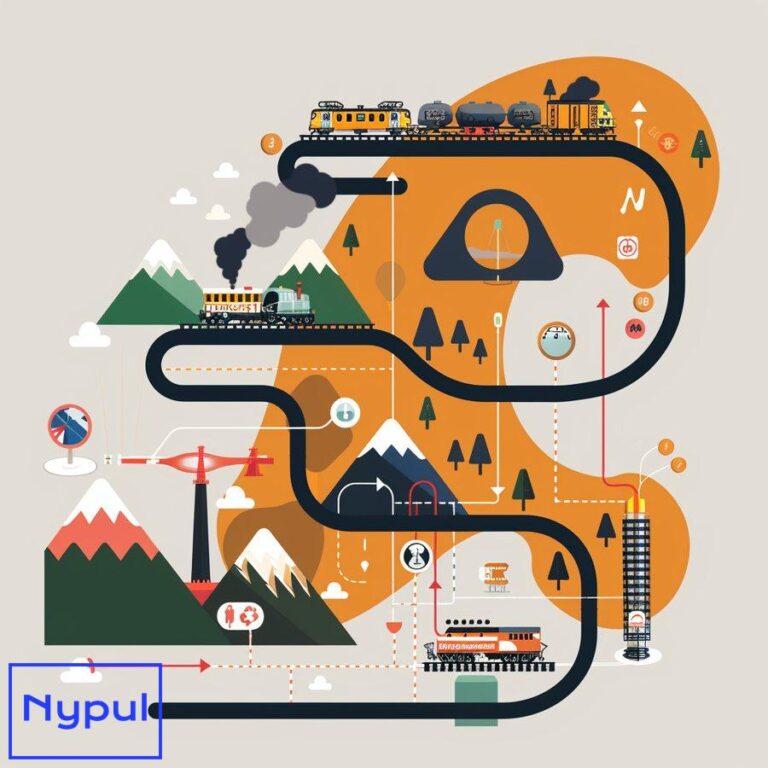What Is the Record Keeping Compliance Program
What is a Record Keeping Compliance Program?
A record keeping compliance program is a structured system designed to ensure an organization creates, maintains, and disposes of records in accordance with legal, regulatory, and business requirements. For drayage and logistics companies, this program encompasses policies, procedures, and technologies that govern the management of critical business documents and data throughout their lifecycle.

The core purpose of a record keeping compliance program is to:
Maintain accurate records
A well-designed program ensures all relevant business activities are documented accurately and comprehensively. This includes financial transactions, operational data, employee records, and customer information.
Ensure legal compliance
The program helps organizations adhere to various laws and regulations that mandate specific record keeping practices. For drayage and logistics companies, this may include Department of Transportation (DOT) regulations, customs documentation requirements, and environmental compliance records.
Facilitate audits and inspections
A robust record keeping system allows companies to quickly produce required documentation during audits or regulatory inspections, demonstrating compliance and avoiding potential penalties.
Support business operations
Effective record keeping enables efficient retrieval of information needed for day-to-day operations, decision-making, and strategic planning.
Protect sensitive information
The program includes measures to safeguard confidential business data and personal information from unauthorized access or disclosure.
A typical record keeping compliance program for drayage and logistics companies consists of several key elements:
Record retention schedules
These define how long different types of records must be kept based on legal requirements and business needs.
Storage and retrieval systems
Physical and digital systems for organizing and accessing records efficiently.
Security protocols
Measures to protect records from loss, theft, or unauthorized access.
Training programs
Education for employees on proper record keeping procedures and their importance.
Audit procedures
Regular internal checks to ensure compliance with the program’s requirements.
Disposition procedures
Protocols for securely destroying or archiving records at the end of their retention period.
The scope of a record keeping compliance program varies depending on the size and complexity of the organization. For smaller drayage companies, it might focus primarily on maintaining driver logs, vehicle maintenance records, and shipping documentation. Larger logistics firms may need more comprehensive programs that encompass a wider range of business records across multiple departments and locations.
Implementing an effective record keeping compliance program requires a thorough understanding of applicable regulations, clear communication of policies throughout the organization, and ongoing monitoring to ensure adherence. When properly executed, such a program not only helps avoid legal issues but also enhances operational efficiency and supports informed business decision-making.
Why is Record Keeping Compliance Important in Drayage and Logistics?
Record keeping compliance holds paramount importance in the drayage and logistics industry due to its multifaceted impact on operations, legal standing, and business success. The significance of maintaining accurate and compliant records extends far beyond mere regulatory adherence, influencing various aspects of a company’s performance and reputation.
Regulatory compliance and legal protection
Drayage and logistics companies operate in a highly regulated environment. Proper record keeping ensures compliance with numerous federal, state, and local regulations governing transportation, customs, and international trade. This compliance shields companies from potential legal issues, fines, and penalties that could arise from inadequate or inaccurate record keeping.
Key regulations affecting record keeping in drayage and logistics:
Federal Motor Carrier Safety Administration (FMCSA) regulations
Customs and Border Protection (CBP) requirements
Environmental Protection Agency (EPA) rules
Department of Transportation (DOT) mandates
International trade regulations (e.g., Export Administration Regulations)
Operational efficiency and decision-making
Accurate and accessible records form the backbone of efficient operations in drayage and logistics. They provide valuable data for:
Route optimization
Fleet management
Inventory control
Performance tracking
Resource allocation
This information enables managers to make informed decisions, identify areas for improvement, and streamline processes, ultimately enhancing overall operational efficiency.
Financial management and auditing
Proper record keeping is crucial for financial management and auditing purposes. It allows companies to:
Track expenses and revenues accurately
Prepare financial statements
Facilitate tax compliance
Support internal and external audits
Accurate financial records not only ensure compliance with tax laws but also provide a clear picture of the company’s financial health, supporting strategic planning and investment decisions.
Customer service and satisfaction
In the competitive world of drayage and logistics, customer satisfaction is paramount. Comprehensive record keeping enables companies to:
Provide accurate shipment tracking
Resolve disputes quickly
Offer detailed billing information
Demonstrate reliability and professionalism
These capabilities enhance customer trust and satisfaction, potentially leading to increased business and improved customer retention rates.
Risk management and insurance
Proper records play a crucial role in risk management and insurance processes. They help in:
Documenting safety procedures and incidents
Supporting insurance claims
Demonstrating compliance with safety regulations
Identifying patterns and potential risk areas
This documentation can be invaluable in minimizing liability, negotiating insurance premiums, and implementing effective risk mitigation strategies.
Environmental compliance and sustainability
With increasing focus on environmental issues, record keeping is essential for:
Tracking fuel consumption and emissions
Documenting compliance with environmental regulations
Supporting sustainability initiatives
Demonstrating corporate social responsibility
Accurate environmental records not only ensure compliance but can also enhance a company’s reputation and appeal to environmentally conscious customers.
Employee management and safety
Comprehensive record keeping is vital for effective employee management and safety in the drayage and logistics industry. It supports:
Driver qualification and training records
Hours of service compliance
Performance evaluations
Accident and incident reporting
These records help maintain a safe work environment, ensure compliance with labor laws, and support fair and effective employee management practices.
Business continuity and disaster recovery
In the event of unforeseen circumstances such as natural disasters or cyber attacks, proper record keeping is crucial for:
Recovering essential business information
Demonstrating ownership of assets
Supporting insurance claims
Resuming operations quickly
Well-maintained records can significantly reduce the impact of disruptive events on business operations.
The importance of record keeping compliance in drayage and logistics cannot be overstated. It forms the foundation of legal compliance, operational efficiency, financial stability, and customer satisfaction. Companies that prioritize robust record keeping practices position themselves for long-term success in this complex and highly regulated industry.
How Do You Implement an Effective Record Keeping System?
Implementing an effective record keeping system in drayage and logistics requires a systematic approach that addresses the unique needs of the industry while ensuring compliance with relevant regulations. The process involves several key steps and considerations to create a comprehensive and efficient system.
Assess current practices and needs
The first step in implementing an effective record keeping system is to evaluate existing practices and identify areas for improvement. This assessment should include:

Review of current record keeping methods
Examine how records are currently created, stored, and managed across different departments.
Identification of regulatory requirements
Determine which regulations apply to your specific operations and what records they mandate.
Analysis of business needs
Consider operational, financial, and strategic requirements for record keeping.
Evaluation of existing technology
Assess current software and hardware used for record management.
Develop a comprehensive record keeping policy
Based on the assessment, create a detailed policy that outlines:
Record types and retention periods
Clearly define which records must be kept and for how long.
Responsibilities and roles
Assign specific roles for record creation, maintenance, and disposal.
Security and access controls
Establish protocols for protecting sensitive information and controlling access.
Compliance procedures
Detail steps for ensuring adherence to regulatory requirements.
Disaster recovery plans
Include procedures for backing up and recovering critical records.
Choose appropriate technology solutions
Select and implement technology that supports your record keeping needs:
Document management systems
Consider cloud-based solutions that offer secure storage and easy access.
Electronic logging devices (ELDs)
Implement ELDs for accurate driver logs and hours of service tracking.
Transportation management systems (TMS)
Utilize TMS software for comprehensive logistics record keeping.
Data backup and recovery tools
Ensure robust systems are in place to protect against data loss.
Establish standardized processes
Create and document standardized procedures for:
Record creation
Develop templates and guidelines for consistent record creation across the organization.
Filing and organization
Implement a logical filing system for both physical and digital records.
Record retrieval
Establish efficient methods for locating and accessing needed information.
Record disposal
Create secure procedures for destroying records at the end of their retention period.
Train employees
Provide comprehensive training to ensure all staff understand and follow the new record keeping system:
Initial training sessions
Conduct thorough training on new policies and procedures.
Ongoing education
Offer regular refresher courses and updates on changing regulations.
Role-specific training
Tailor training to specific job functions and responsibilities.
Monitor and audit the system
Regularly assess the effectiveness of your record keeping system:
Internal audits
Conduct periodic checks to ensure compliance with policies and regulations.
Performance metrics
Track key indicators such as retrieval times and compliance rates.
Feedback mechanisms
Encourage employee input on system effectiveness and areas for improvement.
Continuous improvement
Use audit results and feedback to refine and enhance the system over time.
Integrate with existing systems
Ensure the new record keeping system integrates seamlessly with other business processes:
Workflow integration
Incorporate record keeping tasks into existing operational workflows.
Data synchronization
Ensure consistency across different systems and databases.
API connections
Utilize application programming interfaces to connect different software solutions.
Implement security measures
Protect your records with robust security protocols:
Access controls
Implement user authentication and role-based access.
Encryption
Use encryption for sensitive data, especially during transmission.
Physical security
Secure physical records with appropriate storage and access restrictions.
Cybersecurity measures
Employ firewalls, antivirus software, and regular security updates.
Implementing an effective record keeping system is an ongoing process that requires commitment and resources. However, the benefits of improved compliance, efficiency, and decision-making make it a worthwhile investment for drayage and logistics companies. Regular review and adaptation of the system ensure it continues to meet evolving business needs and regulatory requirements.
What Are the Key Components of a Record Keeping Compliance Program?
A comprehensive record keeping compliance program in the drayage and logistics industry consists of several interconnected components. These elements work together to ensure that all necessary records are created, maintained, and disposed of in accordance with legal requirements and business needs.
Policy and procedure documentation
The foundation of any record keeping compliance program is a set of clear, written policies and procedures. This documentation should include:

Record retention policy
Outlines which records must be kept and for how long.
Record creation guidelines
Provides standards for creating accurate and complete records.
Storage and retrieval procedures
Details how records should be organized and accessed.
Disposal protocols
Specifies methods for secure record destruction.
Compliance monitoring processes
Describes how adherence to policies will be tracked and enforced.
Records inventory and classification system
A systematic approach to identifying and categorizing all records:
Record types
Categorize records based on content and purpose (e.g., financial, operational, personnel).
Retention schedules
Assign retention periods to each record type based on legal requirements and business needs.
Classification levels
Designate sensitivity levels (e.g., confidential, public) to determine access and security measures.
Metadata standards
Define consistent metadata for easy searching and categorization.
Storage and retrieval infrastructure
Physical and digital systems for managing records throughout their lifecycle:
Physical storage
Secure facilities for paper records and other physical documents.
Digital repositories
Electronic document management systems for digital records.
Backup systems
Redundant storage to protect against data loss.
Search and retrieval tools
Efficient methods for locating and accessing needed records.
Security and access controls
Measures to protect records from unauthorized access or alteration:
User authentication
Systems to verify the identity of individuals accessing records.
Role-based access
Restrictions on record access based on job function and need.
Audit trails
Logs of all record access and modifications.
Encryption
Protection for sensitive data, especially during transmission.
Physical security
Measures to secure physical records and storage areas.
Training and education program
Ongoing education to ensure all employees understand their record keeping responsibilities:
Initial onboarding
Comprehensive training for new employees on record keeping policies and procedures.
Regular refresher courses
Periodic updates on changing regulations and best practices.
Role-specific training
Tailored education for employees with specialized record keeping duties.
Compliance testing
Methods to assess employee understanding and adherence to policies.
Audit and monitoring processes
Regular checks to ensure compliance and identify areas for improvement:
Internal audits
Scheduled reviews of record keeping practices across the organization.
External audits
Independent assessments to verify compliance with regulations.
Continuous monitoring
Ongoing checks of key compliance indicators.
Corrective action procedures
Processes for addressing and resolving compliance issues.
Legal hold and e-discovery procedures
Systems for preserving and producing records in response to legal actions:
Legal hold notifications
Processes for quickly notifying relevant parties of the need to preserve records.
E-discovery tools
Technology for efficiently searching and producing relevant records.
Chain of custody documentation
Procedures for tracking the handling and transfer of records during legal proceedings.
Disaster recovery and business continuity plans
Strategies for protecting and recovering critical records in case of emergencies:
Backup procedures
Regular backups of electronic records and critical paper documents.
Off-site storage
Secure storage of backup records at alternate locations.
Recovery protocols
Step-by-step plans for restoring access to essential records after a disaster.
Testing and drills
Regular exercises to ensure the effectiveness of recovery plans.
Vendor management
Oversight of third-party service providers involved in record keeping:
Due diligence
Thorough vetting of potential vendors’ security and compliance practices.
Service level agreements
Clear contracts outlining vendor responsibilities and performance standards.
Compliance monitoring
Regular assessments of vendor adherence to agreed-upon standards.
Data transfer protocols
Secure methods for sharing records with authorized vendors.
Continuous improvement processes
Mechanisms for refining and enhancing the record keeping program over time:
Performance metrics
Key indicators to measure the effectiveness of the record keeping system.
Feedback mechanisms
Channels for employees to report issues or suggest improvements.
Technology updates
Regular assessments of new technologies that could enhance record keeping practices.
Policy review schedule
Periodic evaluations and updates of record keeping policies and procedures.
These key components form a comprehensive framework for a record keeping compliance program in the drayage and logistics industry. By implementing and maintaining these elements, companies can ensure they meet legal requirements, protect sensitive information, and support efficient business operations through effective record management.
Which Specific Records Must Drayage and Logistics Companies Maintain?

Drayage and logistics companies must maintain a wide range of records to comply with various regulations and support efficient operations. The specific records required can vary based on the company’s size, services offered, and jurisdictions in which it operates. However, there are several categories of records that are generally essential for most drayage and logistics companies.
Driver and vehicle records
These records are crucial for compliance with Department of Transportation (DOT) and Federal Motor Carrier Safety Administration (FMCSA) regulations:
Driver qualification files
Commercial driver’s license (CDL) information
Medical examiner’s certificates
Driving records and background checks
Drug and alcohol testing results
Training certifications
Vehicle maintenance records
Inspection reports
Maintenance logs
Repair records
Annual vehicle inspection certificates
Hours of service (HOS) logs
Electronic logging device (ELD) data
Supporting documents for HOS verification
Accident reports
Detailed accounts of any accidents or incidents involving company vehicles
Shipping and cargo documentation
These records are essential for tracking shipments and complying with customs and trade regulations:
Bills of lading
Detailed descriptions of shipped goods
Origin and destination information
Shipper and consignee details
Customs documentation
Import/export declarations
Tariff classifications
Certificates of origin
Delivery receipts
Proof of delivery documents
Signed acknowledgments of receipt
Cargo manifests
Comprehensive lists of cargo for each shipment
Hazardous materials documentation
Shipping papers for hazardous materials
Training records for hazmat employees
Financial and tax records
Accurate financial records are crucial for tax compliance and business management:
Income statements
Profit and loss reports
Revenue and expense breakdowns
Balance sheets
Assets, liabilities, and equity information
Tax returns
Federal, state, and local tax filings
Payroll records
Employee wage information
Tax withholding data
Benefits contributions
Fuel tax records
International Fuel Tax Agreement (IFTA) reports
State fuel tax records
Invoices and receipts
Detailed records of all financial transactions
Insurance and liability records
These documents are important for risk management and compliance:
Insurance policies
Vehicle insurance certificates
Cargo insurance documentation
General liability insurance records
Claims documentation
Records of any insurance claims filedand their outcomes
Safety and compliance records
Maintaining safety-related records is essential for demonstrating compliance with safety regulations and managing risk:
Safety training records
Documentation of employee safety training sessions
Certification records for safety programs
Incident reports
Detailed accounts of workplace incidents or accidents
Follow-up actions taken to address safety issues
Inspection records
Results of safety inspections and audits
Corrective actions taken in response to identified issues
Environmental compliance records
For companies involved in activities that impact the environment, maintaining these records is critical:
Waste disposal records
Documentation of hazardous waste disposal methods
Tracking of waste generation and disposal practices
Environmental impact assessments
Reports on potential environmental impacts of operations
Permits and licenses
Records of all necessary environmental permits and licenses obtained
Customer and vendor records
These records are vital for managing relationships and ensuring compliance with contractual obligations:
Customer contracts
Terms and conditions of service agreements
Service level agreements (SLAs)
Vendor agreements
Contracts with third-party logistics providers (3PLs)
Terms with suppliers and service providers
Performance evaluations
Records of vendor performance assessments
Documentation of any disputes or resolutions
Employee records
Comprehensive employee documentation is necessary for legal compliance and effective human resource management:
Employment applications
Resumes, cover letters, and interview notes
Performance reviews
Regular evaluations of employee performance
Documentation of promotions, raises, or disciplinary actions
Benefits enrollment forms
Records related to employee benefits participation
Health insurance documentation
By maintaining these specific records, drayage and logistics companies can ensure compliance with legal requirements, facilitate efficient operations, and support effective decision-making. A well-organized record keeping system allows for easy access to information when needed, ultimately contributing to the overall success of the business.
How Can Technology Enhance Record Keeping Compliance?
Technology plays a crucial role in enhancing record keeping compliance for drayage and logistics companies. By leveraging advanced tools and systems, organizations can streamline their record management processes, improve accuracy, and ensure adherence to regulatory requirements. Here are several ways technology can enhance record keeping compliance:
Document management systems (DMS)
Implementing a DMS allows companies to store, organize, and retrieve documents electronically. Key benefits include:
Centralized storage
A single repository for all records reduces the risk of lost or misplaced documents.
Version control
Ensures that the most current version of a document is always accessible.
Search functionality
Advanced search capabilities enable quick retrieval of specific documents based on keywords or metadata.
Automated workflows
Streamlines processes such as document approval, routing, and notifications.
Electronic logging devices (ELDs)
For companies involved in transportation, ELDs automatically track drivers’ hours of service (HOS) and provide accurate logs that comply with regulatory requirements. Benefits include:
Real-time tracking
Continuous monitoring of driving hours helps prevent violations.
Data accuracy
Minimizes human error associated with manual logging.
Instant reporting
Facilitates quick access to HOS data during audits or inspections.
Transportation management systems (TMS)
A TMS integrates various logistics functions into a single platform, enhancing record keeping through:
Automated data entry
Reduces manual input errors by automatically capturing shipment details.
Comprehensive reporting tools
Generates reports on key performance indicators (KPIs), shipment statuses, and financial metrics.
Integration with other systems
Seamlessly connects with accounting software, inventory management systems, and customer relationship management (CRM) tools.
Cloud storage solutions
Utilizing cloud-based storage offers numerous advantages for record keeping compliance:
Scalability
Easily adjust storage capacity based on business needs without significant upfront investments.
Accessibility
Records can be accessed from anywhere with an internet connection, facilitating remote work.
Data security
Cloud providers often implement robust security measures to protect sensitive information.
Backup and recovery options
Automatic backups ensure data is not lost due to hardware failures or disasters.
Mobile applications
Mobile technology allows employees to capture and manage records on-the-go. Benefits include:
Real-time data entry
Employees can input information immediately after an event occurs (e.g., delivery confirmations).
Improved communication
Facilitates quick sharing of information between team members.
Enhanced visibility
Managers can monitor operations remotely through mobile dashboards.
Artificial intelligence (AI) and machine learning (ML) tools
AI and ML technologies can enhance record keeping compliance by automating tasks such as:
Data analysis
Identifying patterns in record keeping practices that may indicate non-compliance risks.
Predictive analytics
Forecasting potential issues based on historical data trends.
Natural language processing (NLP) tools
Automatically categorizing documents based on content analysis.
By integrating these technological solutions into their record keeping processes, drayage and logistics companies can significantly improve their compliance efforts. Enhanced efficiency, accuracy, and security not only help organizations meet regulatory requirements but also contribute to better overall business performance.
What Are the Legal Consequences of Non-Compliance?
Non-compliance with record keeping regulations can have severe legal consequences for drayage and logistics companies. Failing to maintain accurate records or adhere to established retention schedules exposes organizations to various risks that can impact their operations, finances, and reputation. Here are some potential legal consequences of non-compliance:
Fines and penalties
Regulatory agencies impose fines for failing to comply with record keeping requirements. The severity of these fines varies depending on the nature of the violation:
-
Federal Motor Carrier Safety Administration (FMCSA): Violations related to hours-of-service regulations can result in fines ranging from hundreds to thousands of dollars per infraction.
-
Customs violations: Failure to maintain proper shipping documentation can lead to fines imposed by Customs and Border Protection (CBP).
-
Environmental violations: Non-compliance with environmental regulations can result in significant penalties from the Environmental Protection Agency (EPA).
These financial penalties can accumulate quickly, placing a substantial burden on a company’s resources.
Legal liability in lawsuits
Inadequate record keeping may expose companies to legal liability in civil lawsuits. For instance:
-
Breach of contract claims: Failure to maintain contracts or shipment documentation may weaken a company’s position in disputes over service agreements.
-
Negligence claims: In cases involving accidents or injuries caused by company vehicles, insufficient documentation may hinder defense efforts against negligence allegations.
-
Employment disputes: Inadequate employee records may lead to challenges regarding wrongful termination or discrimination claims.
Without proper documentation, companies may struggle to defend themselves effectively in court.
Increased audits and scrutiny from regulators
Non-compliance often leads to increased scrutiny from regulatory agencies. Companies found lacking in their record keeping practices may face:
-
More frequent inspections: Regulatory bodies may conduct additional audits or inspections as a result of previous non-compliance findings.
-
Heightened reporting requirements: Companies may be required to submit additional documentation or reports as part of increased oversight efforts.
This heightened scrutiny can strain resources as organizations work to rectify deficiencies while managing ongoing operations.
Loss of business licenses or permits
In severe cases of non-compliance, regulatory agencies may revoke or suspend business licenses or permits necessary for operation. This could lead to:
-
Operational shutdowns: Companies may be forced to cease operations until compliance issues are resolved.
-
Loss of market share: Competitors who maintain compliant practices may gain an advantage while non-compliant companies struggle to regain their footing.
The loss of licenses or permits can have devastating effects on a company’s ability to operate legally within its industry.
How Do You Overcome Common Challenges in Record Keeping Compliance?
Overcoming common challenges in record keeping compliance requires a proactive approach that addresses potential obstacles head-on. Drayage and logistics companies often face unique difficulties due to the complexity of regulations, the volume of data generated daily, and the need for efficient processes. Here are several strategies organizations can implement to navigate these challenges effectively:
Establish clear policies and procedures
Creating comprehensive policies that outline record keeping expectations is essential for guiding employees’ actions. Key elements include:
-
Documentation standards: Define what constitutes acceptable documentation for various types of records.
-
Retention schedules: Clearly outline how long different types of records must be maintained based on legal requirements.
-
Disposal protocols: Specify secure methods for destroying records at the end of their retention periods.
Having well-defined policies reduces ambiguity and helps employees understand their responsibilities regarding record keeping compliance.
Invest in training programs for employees
Regular training sessions are critical for ensuring that employees are aware of their roles in maintaining compliance. Consider implementing:
-
Onboarding training: Comprehensive education for new hires on record keeping policies and procedures.
-
Ongoing refresher courses: Periodic updates on changes in regulations or internal processes related to record keeping.
-
Role-specific training: Tailored education focused on specific job functions that require unique record keeping practices (e.g., drivers vs. administrative staff).
Training fosters a culture of compliance within the organization by empowering employees with knowledge about best practices.
Leverage technology solutions effectively
Utilizing technology tools can streamline record keeping processes significantly. Organizations should consider:
-
Document management systems: Implementing DMS software facilitates centralized storage, version control, and easy retrieval.
-
Automation tools: Automating routine tasks such as data entry reduces human error while improving efficiency.
-
Cloud-based solutions: Cloud storage enables secure access from anywhere while providing backup options against data loss.
Investing in technology not only enhances efficiency but also minimizes the risk associated with manual processes prone to errors or omissions.
Conduct regular audits and assessments
Establishing a routine audit process helps identify areas where compliance practices may be lacking. Organizations should implement:
-
Internal audits: Scheduled reviews focusing on adherence to policies across departments.
-
Compliance assessments: Evaluating current practices against regulatory requirements ensures ongoing alignment with laws governing record keeping.
Regular audits provide valuable insights into potential weaknesses within the system while allowing organizations time to address issues proactively before they escalate into larger problems.
By implementing these strategies—establishing clear policies, investing in training programs for employees leveraging technology solutions effectively conducting regular audits—drayage and logistics companies can overcome common challenges associated with maintaining compliant record keeping practices while positioning themselves favorably within this highly regulated industry.






